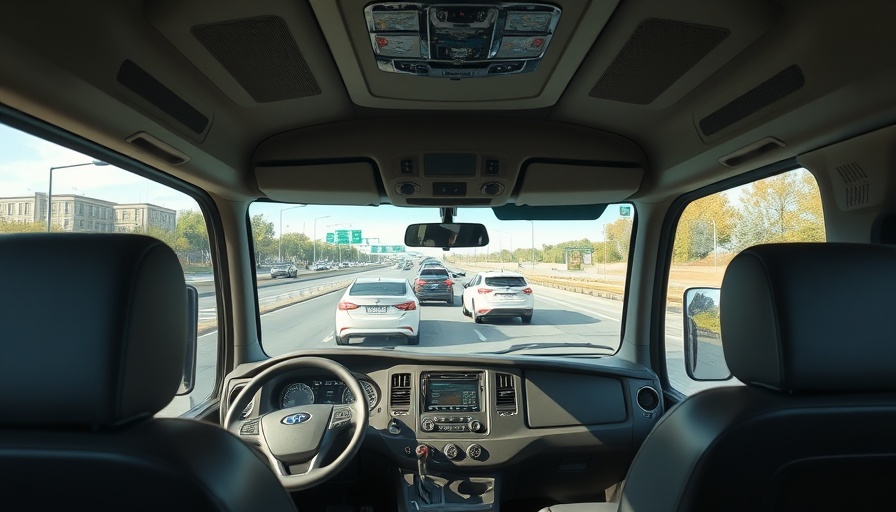
Aurora's Ambitious Leap into Night Operations
Aurora Innovation, a frontrunner in autonomous vehicle technology, is redefining the landscape of freight transportation. With the integration of night driving into their operations, the company aims to significantly extend its trucking services. Currently planning to roll out this new function in the second half of 2025, Aurora is set to enhance its efficiency and operational hours significantly, doubling the driving time and capitalizing on previously untapped nighttime routes.
Expanding Horizons: New Routes on the Map
Initially centered around Dallas, the company is eager to push its driverless trucking capabilities to new locations such as Houston, El Paso, and Phoenix. This expansion not only reflects Aurora's growing ambition but also demonstrates its adaptability in a rapidly-evolving logistics sector. The addition of these routes is aimed at maximizing the return on investment for each vehicle, according to Aurora's CFO, Dave Maday. With plans to increase its fleet to “tens of trucks” by the year’s end, the company is positioned to establish a robust presence across key freight corridors.
Current Operations and Innovations in Safety
While Aurora prepares for a full-fledged night operation, it's important to note that they have already ventured into nighttime and adverse weather conditions with safety operators overseeing the self-driving trucks. Over 4,000 miles of freight have been successfully completed with their driverless technology under the supervision of human safety operators. This cautious yet progressive approach reflects a commitment to safety that is vital in an industry where public trust is paramount.
Financial Insights: A Calculated Approach
Commercially, Aurora recorded $871,000 in pilot revenue during its drivered commercial freight runs, a significant increase reflecting its strategic growth. However, expectations for 2025 revenue remain modest, with projections in the mid-single-digit millions. This conservative estimate emphasizes Aurora's focus on deliberate growth, ensuring stability as they scale their operations. Moreover, with $211 million in operating expenses, it’s clear that R&D remains a critical focal point, positioning Aurora for future advancements.
The Impact of Leadership Changes
Recent developments include the resignation of co-founder and chief product officer, Sterling Anderson. Such leadership changes can often induce shifts in company culture and strategic direction. This moment of transition may present both challenges and opportunities as Aurora seeks to maintain momentum in the driverless market. Stakeholders are likely keeping a close eye on how this change will shape their future endeavors and overall vision.
The Broader Picture: Autonomous Trucks in Logistics
Aurora’s drive towards integrating night operations and expanding its route network comes as part of a larger trend in autonomous vehicle applications within logistics. While many companies are exploring the potential of self-driving technology, Aurora's strategy prioritizes increasing operational efficiency while ensuring safety—a dual focus that could set it apart from competitors. As the transportation industry continues to evolve, innovations like those from Aurora will play a pivotal role in redefining practices and improving delivery systems.
Conclusion: The Future is Here for Autonomous Freight
Aurora Innovation's upcoming expansions and operational shifts highlight the intersection of technology and logistics. As the company braces for a new phase of operations that includes nights and new geographies, it also faces the scrutiny and excitement that comes with innovation. For individuals who follow technology advancements and trends in transportation, Aurora's journey is certainly one to watch, offering insights into how autonomous solutions are reshaping the industry.
 Add Row
Add Row  Add
Add 



Write A Comment